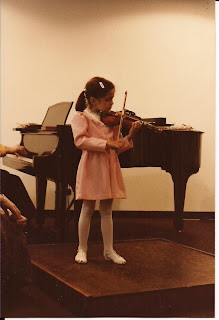 I have a love-hate relationship with my violin the same way I have a love-hate relationship with writing. There are many similarities between my writing life and my violin life. In fact, lot of important lessons I’ve learned about writing, came from playing the violin for so many years.
I have a love-hate relationship with my violin the same way I have a love-hate relationship with writing. There are many similarities between my writing life and my violin life. In fact, lot of important lessons I’ve learned about writing, came from playing the violin for so many years.
1) Practice your scales. Anyone who plays an instrument has spent hours (maybe even days) practicing nothing but scales, arpeggios and etudes. Why do we bother with all that pointless stuff? I mean, it’s not like I’d ever perform my C# melodic minor at a recital. Doesn’t it defeat the purpose of practicing something if you’re never going to perform it?
On the contrary, it’s important to find time for scales even if it means the thing we’re practicing won’t “pan out” or “become something” later on. In writing, I’ve learned that even if a book or story doesn’t reach the ready-to-submit stage, that doesn’t make it any less worthy than projects that have. This is why it’s important build some time into our writing schedule for scales… er, I mean writing exercises.
2) Do not practice in public. As a kid, I used to hate it when I’d go to music school and the other kids would hang around before class and noodle on their violins. I call this faux-practicing. It isn’t real practice because real practice doesn’t look so effortless and flashy. Faux-practice is showing off; it’s performing but making it look like practice. How do I know this? Because every musician knows that real practice is not something you do in public. Real practice is embarrassing and messy and downright ugly. And it’s best kept behind closed doors.
When it comes to writing, I often have that impulse to let people see my work when it’s still in the “practice” phase. I suppose I let people into my practice space prematurely because otherwise they won’t believe I’m actually writing. The violin kid inside has helped me gain the strength to tell people: “Back off. I’ll show you when I’m ready.”
3) Sometimes you have to suck it up and do it. Every morning from the age of 4 on, I would spring out of bed and say to myself: “Aw yeah! I get to practice the violin today!” And if you believe that then I’ve got some beautiful ocean-front property in Nevada that I’d like to sell you.
Playing an instrument–much like writing–is one of the ultimate tests of delayed gratification. After all, you spend endless hours alone in a room, practicing for a goal that could be months or years away. The only thing that gets you through is knowing that the when you reach the prize at the end, it’s going to be worth it. Otherwise, why would you torture yourself like this, right? The answer lies in lesson #4.
4) You have to love the work, even if it’s only some of the time. If you don’t, you will be miserable. After all, what if the end-goal turns out not to be as great as you expected? Or what if you get on that stage and screw up so royally you can never show your face in music school again? While it’s important to grit your teeth and practice toward a goal, you also need to love the practice in and of itself. Sure, I was never one of those kids who practiced until her fingers bled or her parents tore her away from the instrument, but there was a certain satisfaction that always came from a productive practice session.
Same with writing. Of course you want to have some lofty dreams or goals to keep you motivated but in the end, if writing is painful for you, then maybe you should consider something that brings you more joy.
Because it all comes down to joy. I write for those moments when the story suddenly clicks and makes sense or when characters surprise me. I write even in those times when it seems more like work and less like fun. I write because sooner or later, it stops feeling like practice and starts feeling like joy.
What about you? What is it about writing that gives you joy?
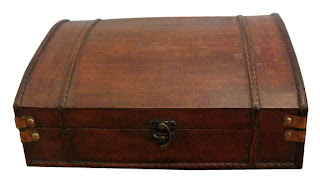

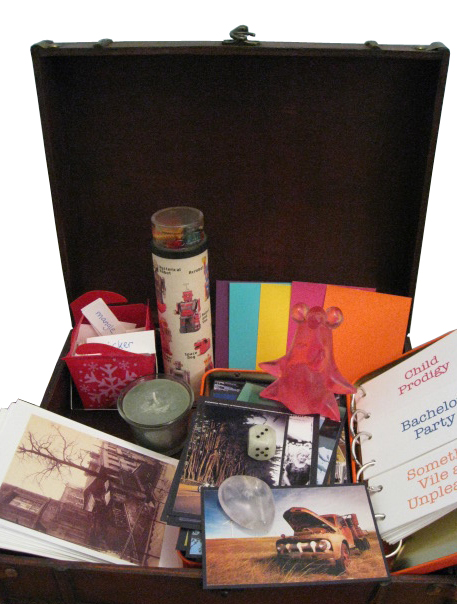








 Call me Gabi (pronounced gah-BEE). I'm a writer, freelance teacher, and a lover of books and words. I'm also the instigator of DIY MFA. iggi's my sidekick, but he thinks he's the brains behind this operation.
Call me Gabi (pronounced gah-BEE). I'm a writer, freelance teacher, and a lover of books and words. I'm also the instigator of DIY MFA. iggi's my sidekick, but he thinks he's the brains behind this operation.
 Body Image in Literature
Body Image in Literature YA Cafe: Interview with Julia Mayer
YA Cafe: Interview with Julia Mayer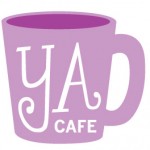 YA Cafe: New and Improved!
YA Cafe: New and Improved!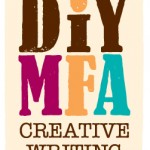 The new face of DIY MFA!
The new face of DIY MFA!